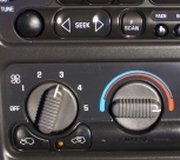The problem with that solution is you don't know what caused the short or whether it's going to affect other wires in that harness. Two common causes are the harness is draped over the sharp edge of a metal bracket and this is the first wire to rub through the insulation, and water snuck in and caused corrosion, either at a soldered splice or where someone previously sliced the insulation to take a voltage reading.
I never allowed my students to cut or poke a wire to take a reading, and running a new wire without knowing what was wrong with the original one was also not an acceptable repair on a customer's car. I've also been involved with wire harnesses laying on the inner fender, sliding back and forth as the engine rocks, and they rub through the paint and the wires' insulation. By the time the first wire shorted, in this case for the back-up lights, (which were the clue), and the radiator cooling fan were on the same circuit, and a half dozen adjacent wires were almost rubbed through too. The complaint was intermittent overheating due to a dead radiator fan. Our AC system specialist found the burned fuse link wire, replaced it, and the fan motor which he logically assumed was tight or shorted. The van came back at least four more times over a few weeks for the same fuse link wire. It was just by chance and luck I noticed he had no back-up lights when he went to run the van back outside. The new fuse wire had already burned open. Putting it in reverse caused the engine to rock, the harness to slide, and the short to occur. If that cause hadn't been found and he just ran a new wire, who knows which wire would have rubbed through next, and would it have left the owner sitting on the side of the road, ... On a Saturday night, ... After midnight, ... In the middle of winter, ... Too far to walk home?
A similar problem occurred on a truck after someone installed an aftermarket dual exhaust system. They did a real nice job, but they didn't see the wire harness that was being tugged up by the pipe where it went over the rear axle. That harness melted through after a few weeks. The problem was fuses would blow intermittently when the brake light or the left signal were turned on. In this case we had the luxury of knowing the recent history, so we knew where to look first. If we didn't have that knowledge, someone might have cut the wire for the left rear brake / signal, and ran a new one. The wires for the right brake / signal, tail lights, and ABS speed sensor were in that harness too. One by one each of them would have developed the same intermittent short.
One advantage to your AC compressor clutch circuit is there's no other wires spliced into it, so that eliminates the likelihood of a corroded splice. And the need to follow multiple wires. Other than what I've mentioned, that wire you eliminated has to be shorted to something. This diagram indicates there's no ground wire in the harness for the clutch coil. The feed and ground wires touching each other is another possible cause eliminated.
One thing to be aware of is, as with an ignition coil, when voltage is switched off to any coil of wire, it creates its own voltage spike. Even little relay coils do that. To prevent those spikes from feeding back and possibly damaging other components, they're shorted out by diodes placed backward in the circuit. During normal operation, it's like those diodes aren't even there. They're "forward-biased", meaning turned on, and act like a wire when those spikes occur. That shorts them out making them harmless. It is customary to use a diode in the compressor clutch's circuit for the same reason. Some manufacturers put the diode right across the two terminals in the coil's plug. Some splice them into the wire harness, but to do that you have to also have the ground wire running through there. If there is some other ground wire I didn't see, and if they did put the diode in there, it is eliminated now by cutting out that wire. I have a suspicion that won't cause a problem, but the manufacturers had some reason for wanting to include them in the circuit.
What's more confusing is in your first post you did a real nice job of describing everything you did already, and that included removing the clutch relay, and unplugging the clutch, and the fuse still blew. If the wire to the clutch has a short, it would have been isolated / removed when the relay was removed. I know you've been at this quite a while, and sometimes you gotta just throw in the towel and run the new wire. I hope the system keeps working, but it sure would be nice to know what really happened. If it gives you more trouble, we'll be here for you.
Image (Click to make bigger)
Wednesday, August 11th, 2021 AT 8:27 PM


























